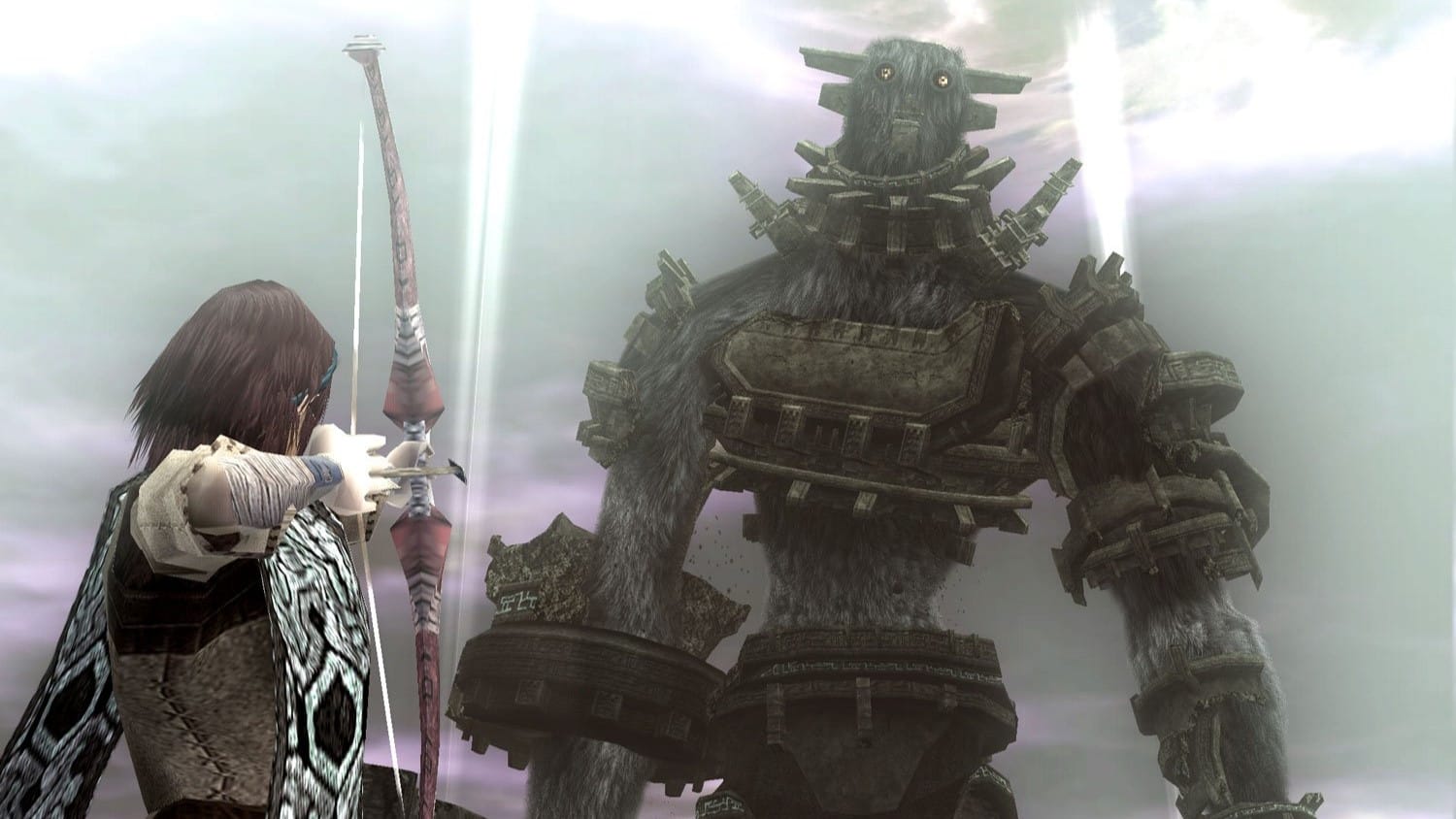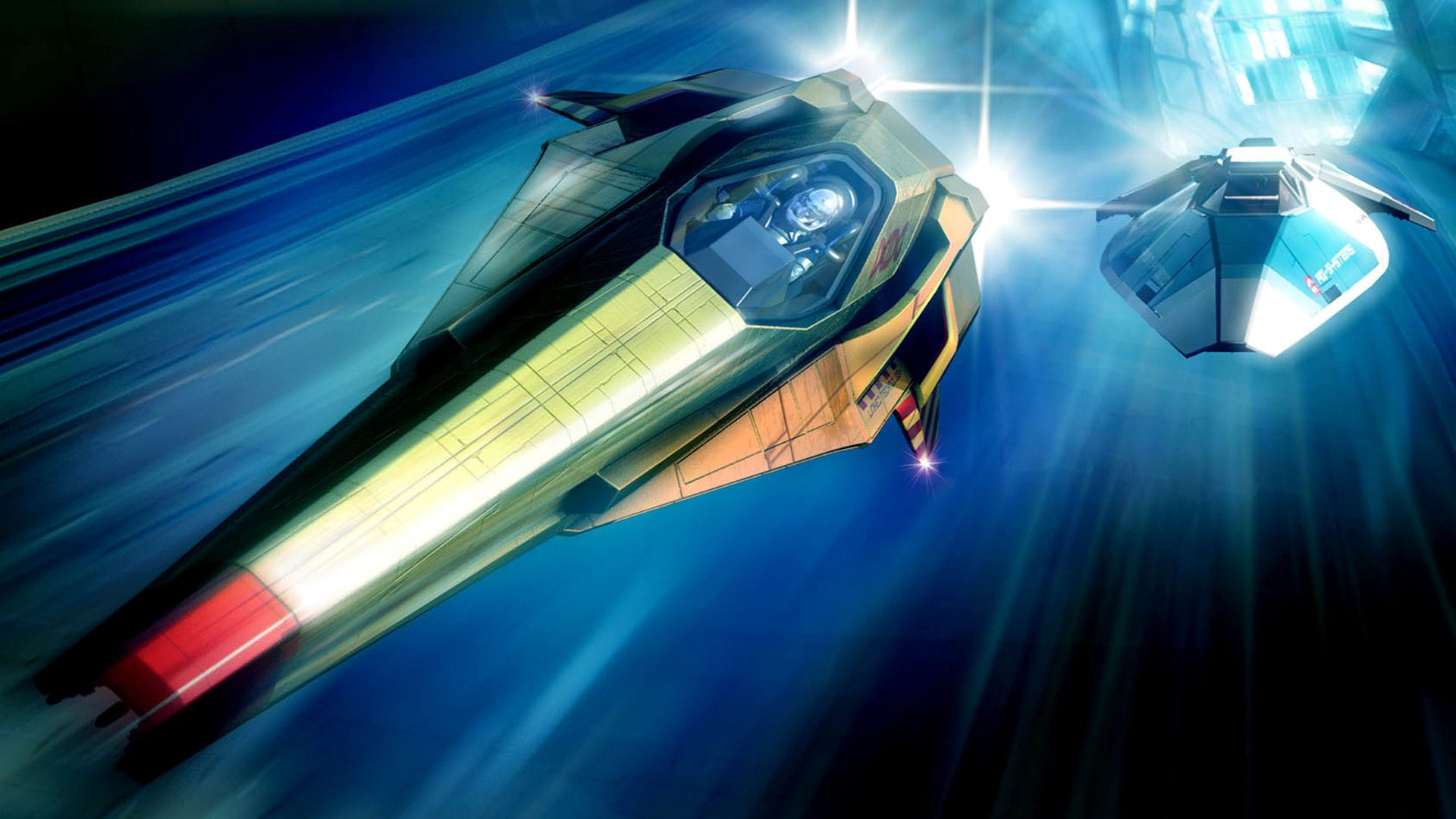Few games hold the kind of charm that Shadow of the Colossus has cast over players since its original release in 2005. Remastered in glorious HD on the PS3, this legendary adventure invites you back to a world of monumental battles and haunting beauty. Whether you’re a first-time wanderer or a returning warrior, you’ll find out whether Shadow of the Colossus still holds up as one of the most beloved titles in gaming history.
From Ico to Colossi
Back in 2001, Ico didn’t exactly set the world on fire when it launched. Its ethereal environments and quiet puzzles were a stark departure from what most players expected at the time, leading to modest sales and polarizing reviews. But instead of abandoning their unique style, SCE Japan doubled down. They took the atmosphere and artistic soul of Ico and fused it with the raw thrill of epic battles — and thus, Shadow of the Colossus was born. With its stripped-down gameplay and colossal bosses, this spiritual successor didn’t just carry forward Ico’s DNA — it redefined what an “artsy” game could be, inspiring countless titles in the years that followed.
When Ico arrived on the scene in 2001, it was a game that didn’t quite fit in. Its abstract environments, minimalist storytelling, and haunting atmosphere set it apart in an industry dominated by bombastic action and complex mechanics. While Ico didn’t break sales records, it quietly garnered a passionate following that would become the foundation for SCE Japan’s next bold experiment. This cult classic laid the groundwork by proving that games could be both intimate and epic, sparking a belief in artistic risk-taking that would culminate in the creation of Shadow of the Colossus.
Despite its shared DNA with Ico, Shadow of the Colossus was never content to simply retread familiar ground. It built upon Ico’s legacy, but it charted its own course with a singular focus: sixteen towering bosses and an empty, sprawling world. There were no puzzles to solve in cramped castles, no bustling towns to explore. Instead, it presented a stark, breathtaking world filled with only the colossal beasts and the player’s determination to conquer them. This bold shift in direction elevated Shadow of the Colossus from a spiritual successor to a milestone all its own — a game that’s every bit as captivating and powerful today as it was back then.
Level Design
The landscapes of Shadow of the Colossus are vast and unhurried, inviting players to simply be in the world. Riding across sunlit plains, navigating ancient ruins, and descending misty canyons – every environment exudes a kind of digital ASMR. The minimalist approach means there’s no clutter, no endless side quests – just the serene expanse of nature stretching as far as the eye can see. Even the soundscape reinforces this tranquility: rustling wind, distant animal calls, and the quiet clop of your horse’s hooves. It’s not just about finding the next colossal target – it’s about feeling the rhythm of the land and letting its soothing emptiness wash over you.
Unlike many games that bombard you with tutorials and constant hints, Shadow of the Colossus trusts you to figure things out. There’s no minimap full of markers, no endless checklist of objectives. Instead, the game’s minimalist approach allows you to lose yourself in the moment. The world’s open design nudges you forward without pushing, leaving plenty of space for you to breathe and explore. It’s a gentle invitation, not a demand – and it’s this freedom that makes the experience so profoundly immersive.
While the world may seem serene, it’s also cleverly designed to play a part in every epic showdown. Crumbling cliffs, towering pillars, hidden ledges – these natural features become crucial allies when taking down each colossus. Figuring out how to use the environment to your advantage is just as important as learning each beast’s patterns. It’s not just you versus the colossi – it’s you and the world versus the giants. Nature becomes your secret weapon, turning every battle into a blend of puzzle and platforming mastery.
Storytelling
At its heart, Shadow of the Colossus spins a simple yet powerful tale: a young man named Wander, driven by desperate love, journeys to a forbidden land to revive a girl named Mono. The price? Slaying sixteen colossal beasts, each more daunting than the last. There’s no elaborate exposition or endless dialogue — the game’s minimalist storytelling trusts you to piece together the fragments of a love story etched into the silent ruins and whispered through the windswept plains.
The final moments of Shadow of the Colossus are as mysterious as the journey itself. After toppling the last colossus, you’ll discover that the ending is more cryptic than conclusive. “Is it a satisfying payoff or a frustrating cliffhanger?” That’s the question that’s kept fans debating for years. Some see it as an elegant ambiguity — an ending that’s open to interpretation, like a riddle with no single answer. Others might call it a narrative cop-out, leaving players hanging in the void with more questions than closure.
For all its ambiguity, there’s no denying the story’s artistic ambition. Shadow of the Colossus isn’t about traditional plot beats or exposition-heavy cutscenes — it’s about creating a mood, a feeling, a sense of mythic grandeur that lingers long after the credits roll. Whether you find the plot compelling or confounding, it’s clear that the game’s narrative approach is deliberate. It’s not meant to be fully understood — it’s meant to be felt. And in a world of games that too often spell everything out, that artistic choice still feels refreshingly bold.
Graphics and Performance
When Shadow of the Colossus HD arrived on the PS3, it brought with it a crisp, polished facelift that made an already stunning world even more mesmerizing. The remaster boasts full 1080p visuals, transforming the dusty PS2-era textures into a sweeping, high-definition panorama that still impresses to this day. From shimmering lakes to endless plains, every pixel of this breathtaking world has been sharpened and refined, giving players the chance to truly soak in the game’s painterly landscapes.
One of the most noticeable upgrades in the HD remaster is the bump in frame rate. Gone are the jarring 15-20 FPS drops that plagued the PS2 original — the PS3 version delivers a smooth, locked 30 FPS experience that’s a joy to play. This silky-smooth boost doesn’t just make Shadow of the Colossus prettier; it also makes climbing those towering beasts feel tighter, more responsive, and far more immersive. It’s a small but significant tweak that helps bring out the best in every showdown.
While the PS4 remake of Shadow of the Colossus reimagined the game with completely overhauled graphics, the PS3 version occupies a sweet spot of authenticity. It keeps the original textures and atmosphere intact, serving as an authentic throwback to the original experience rather than a reinvention. Sure, it doesn’t match the dazzling fidelity of the remake, but for many fans, this version’s nostalgic charm and adherence to the source material make it the definitive way to revisit Wander’s haunting journey.
Atmosphere and Soundscapes
There’s something special within the lonely brilliance of Shadow of the Colossus. The rolling hills, ancient structures, and endless skies form a world that feels both ancient and alive — a place where silence speaks louder than any dialogue. These vast, empty landscapes aren’t just backdrops; they’re characters themselves, shaping your journey and inviting you to lose yourself in their quiet majesty. Even in the most intense battles, that sense of solitude never fully disappears, making every victory feel like a solitary triumph against the odds.
The game’s sound design is a masterclass in minimalism and power. When you’re exploring, the world hums with gentle natural sounds: the whisper of wind, the clop of Agro’s hooves, the rustling of distant wildlife. But when you engage a colossus, the haunting score by Kow Otani swells to epic heights, transforming each battle into a cinematic experience. It’s a contrast that never fails to hit home — the calm before the storm, followed by the thunderous symphony of struggle. This dynamic audio design doesn’t just set the mood; it deepens every moment, turning even a quiet ride through the plains into something unforgettable.
Final Thoughts
Nearly two decades on, Shadow of the Colossus still captivates with its unique aesthetic — a testament to the power of art direction over raw graphics. The muted color palette, the gentle bloom of the sun, and the towering colossi themselves all come together to create a visual identity that transcends technology. It’s a style that feels deliberate and carefully crafted, ensuring the game never looks dated. In an industry where many older games show their age, Shadow of the Colossus remains as visually striking as ever, proving that true beauty is born of artistry, not just polygons.
Shadow of the Colossus isn’t just a game — it’s a milestone in interactive art. Its bold minimalism and towering ambition inspired countless developers, weaving its DNA into everything from Breath of the Wild’s vast landscapes to Journey’s quiet, emotional storytelling. Even today, it stands as a testament to the power of simplicity and atmosphere in gaming. Few titles have managed to capture the same sense of awe and melancholy that Shadow of the Colossus does so effortlessly.
Whether you’re a die-hard fan of gaming history or a newcomer looking to experience a legend, Shadow of the Colossus on PS3 is still an absolute must-play. Its world is as breathtaking as ever, and the battles remain some of the most epic in gaming. Don’t be put off by the abstract story or minimal hand-holding — everything else about this game is pure excellence. For all the giant slayers and lonely wanderers out there, Shadow of the Colossus is ready to steal your heart all over again.
Verdict
Shadow of the Colossus HD
Excellent







